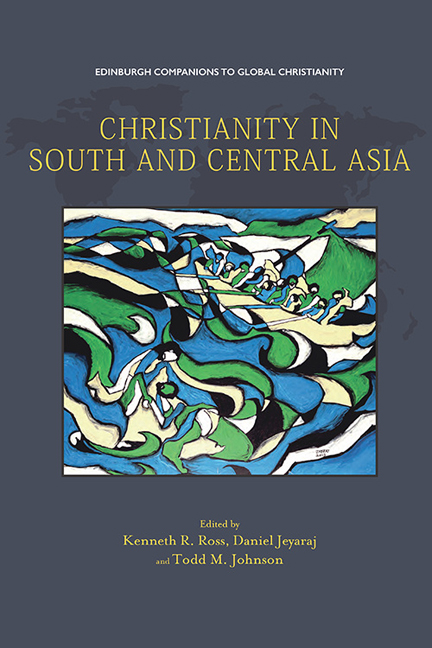Tajikistan
Published online by Cambridge University Press: 30 April 2020
Summary
Tajikistan is one of the five Muslim-majority countries of the former Soviet Union, sharing borders with Afghanistan in the south, Uzbekistan in the north and north-west and also Kyrgyzstan and China. The prehistory of the country is connected with many local semi-autonomous states, such as Sogdiana and Bactria, and also the centralised state of the Persian Empire. The majority Muslim population of the country follows the Hanafi school of Sunni Islam, with a small minority of Ismaili Muslims who are highly concentrated in the Gorno-Badakhshan Autonomous Oblast (GBAO).
The history of Christianity in the area of modern Tajikistan goes back at least to the late fourth century and is closely connected to the missionary movement of the Church of the East in the Central Asian landmass. The archaeological material evidence, including textual and epigraphic monuments, shows that the Sogdians (an Iranian ethnic group whose habitation area encompassed the northern territories of what is now Tajikistan) were one of the most Christianised nations in the region.
The periodisation of the Christian presence in Tajikistan follows broadly the same chronology as that of the history of Christianity in Central Asia as a whole. This can be approximated as follows. The ‘ancient period’ occurred during the fifth to seventh centuries, when Christianity was represented by the Syriac-speaking Church of the East. The eighth to fourteenth centuries can be considered the ‘medieval period’, when Christianity was represented by the Church of the East and the Latin-speaking Catholic Church. Finally, the ‘modern period’ began in the nineteenth century, with Christianity represented by the Russian Orthodox and various Protestant denominations. Today, Christians are the smallest minority religious group in the country, mainly present in the large cities. Traces of ancient Christianity in the various regions survive only in historical artefacts. The main living Christian tradition present is the Russian Orthodox Church (ROC), introduced from the 1860s during the Russian tsarist regime but later repressed under the Soviets. Today it is flourishing primarily among the ethnic Russians and other European ethnic groups who claim Orthodoxy as their historic faith.
- Type
- Chapter
- Information
- Christianity in South and Central Asia , pp. 65 - 69Publisher: Edinburgh University PressPrint publication year: 2019



